Ke Yu (Diana) Liu
Year of birth: 2000.
Where do you live: Vancouver, Canada.
Your education: BFA in Illustration Entertainment Arts from ArtCenter College of Design.
Describe your art in three words: resonating, joyful, memories.
Your discipline: Storytelling and Storyboarding.
Website | Instagram
What initially drew you to animation and storytelling as a career? Was there a particular film or moment that sparked your interest?
My love for animation came later than most of my peers. Initially, I set out to become an illustrator, but everything shifted during my first year of college as an illustration major. I visited my best friend from high school, who was studying at ArtCenter with dreams of becoming a visual development artist. Touring the school, I was captivated by the stunning student work—visual development paintings, character designs, animated projects, and more. That visit sparked something in me, and I realized I wanted to be part of that world. Not long after, I prepared my portfolio and applied to transfer to ArtCenter.
Interestingly, no single film initially sparked my decision to pursue animation—it was more of a gradual realization. However, one film has played a significant role in shaping my passion: How to Train Your Dragon. I first saw How to Train Your Dragon 2 in theaters, and I loved it so much that I decided to watch the first film on my tiny, worn-out iPad. Instantly, I fell in love. I couldn’t believe I had gone 14 years without experiencing this movie!
Still, to this day, How to Train Your Dragon 1 is my favorite film. While it’s not traditionally a tear-jerker, it moved me to tears. I’m usually pretty stoic when it comes to watching movies, but the sheer beauty, excitement, and emotional depth of the story overwhelmed me. Every time I rewatch it, listen to the soundtrack, or even think about it, I feel that same sense of wonder and inspiration. Looking back on my journey into animation, How to Train Your Dragon 1 has been, and continues to be, a source of inspiration—a film that reminds me of why I love what I do.
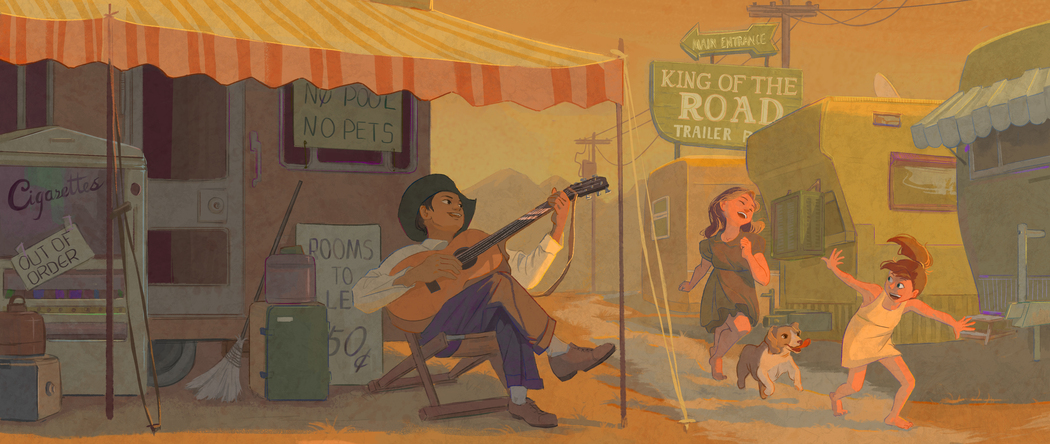 Diana Liu | Trailer Park Final
Diana Liu | Trailer Park Final
In your role as an Art Teacher, you inspired young students. How did teaching art impact your own creative process?
I wholeheartedly believe that to truly improve at something, you need to teach it to others. Teaching pushes me to tap into every aspect of my artistic skills and knowledge, constantly reinforcing what I know. When I teach, answer student questions, or break down complex concepts, I’m essentially re-teaching myself those same ideas. It’s especially true when I’m planning lessons. Over time, many aspects of my work became muscle memory—things I did without thinking. But when I teach, I have to break down what feels second nature into digestible steps so that my students can understand and apply them to their own practice. In doing so, I revisit the fundamentals and embed them deeper into my own process. It’s truly a win-win situation!
Teaching also influences my creative process in unexpected ways. My students inspire me constantly, especially the younger ones. Children’s art possesses a raw, unfiltered creativity and energy that adults often lose as they become more skilled. Their art is innocent—motivated purely by the joy of self-expression, which I find incredibly beautiful. I often draw with the goal of improving in areas like perspective, color theory, or anatomy. But children? They draw out of love. They have the freedom to create whatever comes to mind, even if it doesn’t resemble anything that exists in reality. Their imaginative approach often reignites my own passion for drawing and gives me fresh ideas, especially when it comes to color. They don’t worry about rules like color harmony or traditional shading; they just splash colors on the page because it feels right. And sometimes, that gives me entirely new color palettes to explore.
As Picasso once said, “It took me four years to paint like Raphael, but a lifetime to paint like a child.” I hope everyone, no matter how skilled, can hold onto that freedom and paint like a child.
Can you share a bit about your transition to working at Pixar and DreamWorks as a Story Intern/Trainee? What have you learned from your time there so far?
My experiences at Pixar and DreamWorks were vastly different but equally challenging, and both helped shape me as an artist in unique ways.
At Pixar, the structure was very much like a classroom. We received new assignments almost every week from different directors, drawing non-stop for three months. It was an incredible opportunity to put everything I had learned in theory into practice. I discovered that despite the immense workload that comes with being a storyboard artist, I truly love it—and could see myself doing it for the rest of my life.
DreamWorks, on the other hand, was more of a production-based experience. I was thrown into the heart of an actual movie production, working alongside fellow storyboard artists, the Head of Story, and the Director. I had to learn the specific workflow of that production on the go. I started by handling revisions, and once I demonstrated that I could deliver quality work on deadline, I was trusted with short sequences. Over time, as I grew more comfortable with the story and the director’s vision, I was assigned longer, more pivotal sequences. My confidence grew as I became more familiar with the characters and the production itself.
At Pixar, I learned how to construct shots, scenes, and sequences. I discovered how to convey emotion through character acting and interactions. I found my storytelling voice, gained a deep understanding of story structure, and learned to work effectively in a team environment. I also had the chance to tell my own stories, which were well-received and gave me even more confidence in my abilities. While at DreamWorks, I gained a real-world understanding of what it’s like to work on a production. I spoke to people across various departments and learned how a movie is made from start to finish. This experience further solidified my dream of making my own movies one day.
Both experiences were truly once-in-a-lifetime opportunities. I grew both artistically and personally at each studio, and I made lasting friendships with people I would love to work with again in the future.
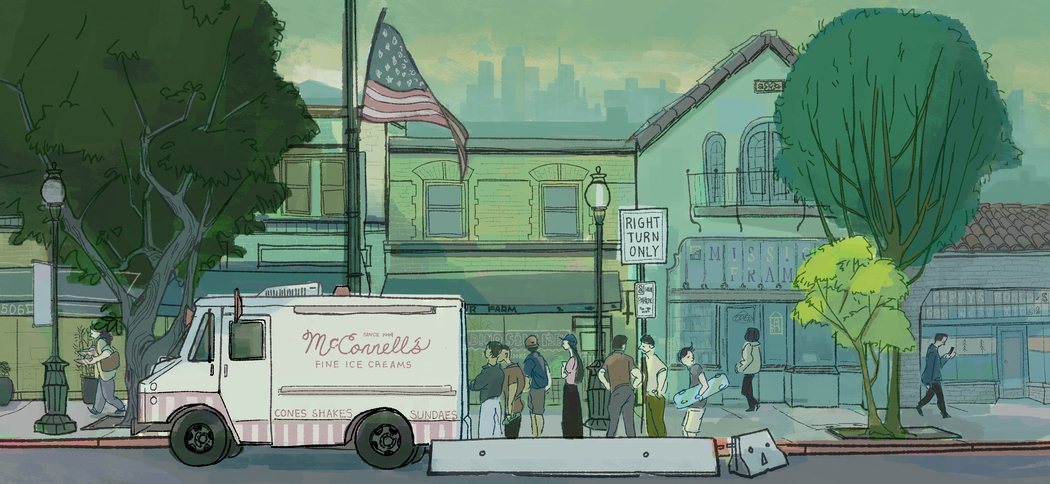 Diana Liu | Store Front Final Day
Diana Liu | Store Front Final Day
Your career includes both art education and animation. How do these different experiences complement each other?
My experiences in both art education and animation complement each other in ways that continually enhance my skills and creativity. Teaching forces me to break down complex artistic concepts, such as perspective, anatomy, or composition, into digestible parts for my students. In doing so, I revisit and strengthen those same fundamentals, which directly improves my animation work. The process of explaining art to others reinforces my own understanding and helps me refine my skills.
On the flip side, my work in animation brings a practical, industry-focused perspective to my teaching. I can share real-world applications of the techniques we discuss in class, giving my students insight into how the skills they’re learning translate into the animation industry. Animation also keeps me creatively energized, which translates into more dynamic and engaging lessons. The inspiration I gain from working on animated projects often sparks fresh ideas for the classroom, and my students’ uninhibited creativity reminds me to approach my own work with that same sense of wonder and exploration.
Ultimately, both roles feed into each other—teaching makes me a better artist, and my experience in animation makes me a more effective, insightful educator.
How do you stay inspired and continue to develop your storytelling voice in such a fast-paced industry?
I find inspiration in the small moments of life—whether it’s memories, time spent with friends and family, or even stories I come across online. I love taking something seemingly simple and expanding it into a fully realized story with a clear beginning, middle, and end. For instance, my most recent sequence, Parallel Parking, started as a casual joke between my roommate and me. We were talking about how frustratingly hard it is to parallel park, and how it feels like it takes forever to get a car into a spot. That lighthearted conversation eventually grew into a full story.
My friends are another source of inspiration for me. I love diving deep into discussions about storytelling with them. In fact, I’m starting a podcast with a friend where we plan to bring on guests and talk all things story and animation. Talking with other passionate people always gets my creative gears turning. When we share our viewpoints, they often clash, merge, and challenge each other, which is always refreshing. It’s important in this industry to hold onto your own opinions, but it’s just as important to stay open-minded and respect different perspectives.
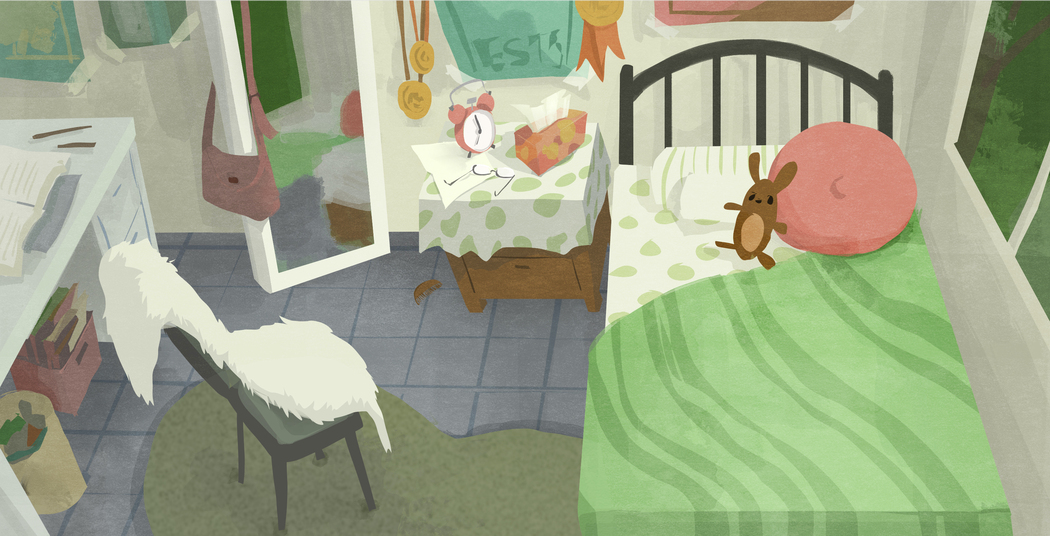 Diana Liu | Good comp
Diana Liu | Good comp
What advice would you give to young artists who want to pursue a career in animation and storytelling?
Start small. It’s easy to feel overwhelmed when you look at someone’s IMDB page or portfolio and see the sheer amount of work they’ve done. But remember, everyone started somewhere. Nobody draws a Spiderverse-level chase sequence the first time they pick up a pencil. Focus on practicing the fundamentals—perspective, anatomy, color theory, shape language, and so much more. These are the essential tools you need to create from imagination. Don’t expect massive growth in just one month, but don’t underestimate how much progress you can make in a year.
Be yourself. The competition in animation is fierce, especially now that the internet has made it more accessible as a career path. With so many people referencing each other, it can feel like everyone’s style is starting to look the same. There’s nothing wrong with referencing artists you admire or works that speak to you, but if you’re only referencing someone because they’re famous or following a trend, you risk losing your own voice. Always ask yourself: What made you want to become an artist in the first place? Why does your work matter to you, and how do you want it to matter to others? In a world where so many people are blending together, standing out by being your authentic self can resonate not just with the online audience but also with companies looking for something unique—something they haven’t seen before.
How do you continue to push your creative boundaries while staying true to your unique style and voice?
I always have a wealth of ideas lined up in my mind, each representing stories I want to tell and visions I want to create. With every project, I set specific goals for myself to ensure I’m continually growing as an artist. For instance, if I’ve recently worked on several emotional sequences, I’ll pivot and focus on comedy for my next endeavor. This not only keeps my work fresh but also encourages me to explore different facets of storytelling.
Recently, I began developing a comedy-action sequence that incorporates a musical element—an area I had never tried before. This project has been a thrilling challenge, pushing me out of my comfort zone and allowing me to experiment with new narrative techniques and visual styles. By stepping outside my usual boundaries with each new concept, I find that I’m constantly improving my draftsmanship and refining my storytelling skills.
Additionally, I like to reflect on the themes and emotions I want to convey in my work. This helps me stay true to my unique style and voice while still exploring new ideas. Getting feedback from other artists really sparks my creativity. Their insights can lead me down unexpected paths and open up new possibilities for my work.
What are some of the biggest challenges you’ve faced working on animated productions, and how did you overcome them?
The biggest challenge I faced while working on animated productions was overcoming self-doubt and imposter syndrome. When I first entered the industry, I often questioned my skills and my place among such talented peers. Being surrounded by artists whose work I deeply admired was intimidating, and I sometimes felt unsure about my ability to contribute meaningfully.
To address these feelings, I focused on accepting myself and my current skill level while continuously striving for improvement. I reminded myself that everyone, regardless of their experience, experiences moments of doubt. I was fortunate to be mentored by many wonderful artists whose guidance helped me navigate challenges in the animation pipeline. Their reassurance that my feelings were normal and shared by many provided a comforting perspective. Hearing their stories of struggle and triumph inspired me to embrace my journey, knowing that every artist encounters hurdles along the way.
Ultimately, I learned to appreciate my unique perspective and the valuable contributions I can make to a team. This shift in mindset not only boosted my confidence but also enriched my creative process, allowing me to engage more fully with my work.
How has your experience been working collaboratively on short films with a team of artists and independently?
I’ve had the privilege of working on a number of short films—some independently, others with friends, classmates, and even volunteers from the industry. Each project offered unique experiences that have helped shape my understanding of the animation process.
My first real production experience was on a school project, MORRY. At the time, I didn’t fully grasp how to collaborate with others, especially when their ideas were vastly different from mine. But through that process, I learned the importance of effective communication, offering constructive feedback, and balancing creative input with practical production needs. I also gained insight into how storyboarding fits into the larger production pipeline, which was a game-changer for me.
After MORRY, I decided to create my own short film BLUE. This project allowed me to take full control of the pipeline, from pre-production to animation, and it was also my first dive into 2D animation. Through this solo experience, I developed a deeper understanding of filmmaking and fell even more in love with the process.
Since then, I’ve contributed to a variety of professional and student short films, handling storyboarding, background design and paint, and animation cleanup. Each project, no matter how big or small, taught me something valuable—whether it was refining my technical skills or discovering new ways to work with a team.
I’d highly encourage any aspiring artists that want to break into animation to find a group of passionate people to collaborate with, but also to try making something on your own. Both experiences offer invaluable lessons and provide a well-rounded understanding of the animation pipeline.

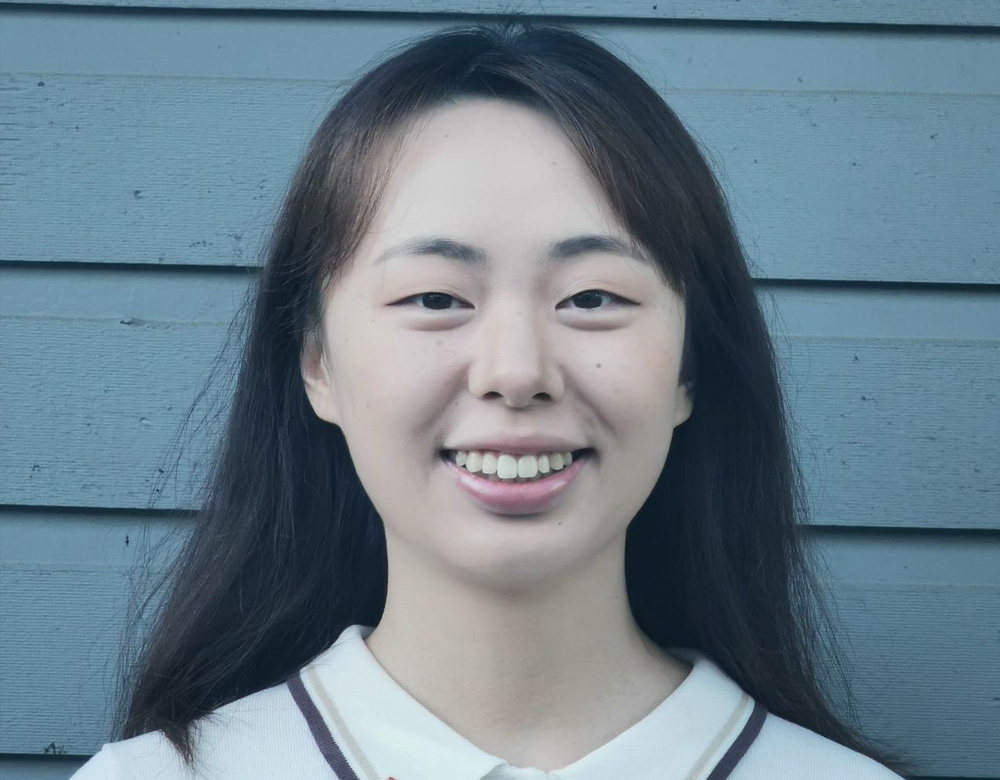
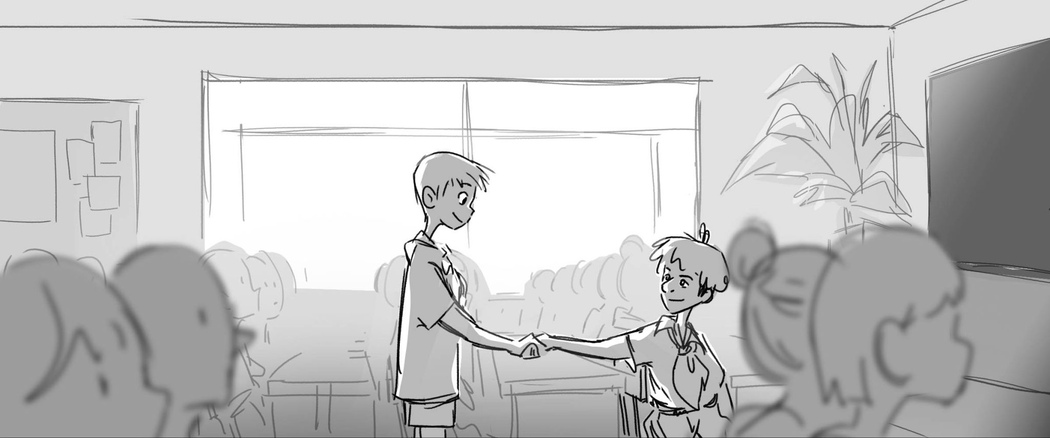
Leave a Reply